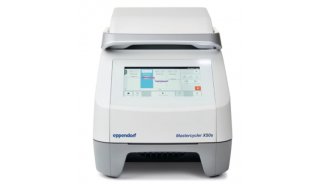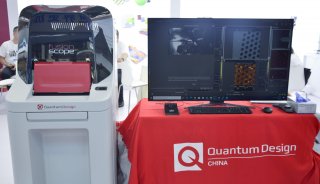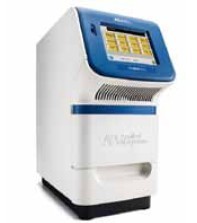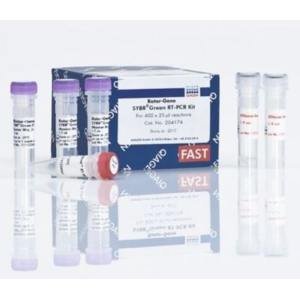PCR Primer Design(一)
Molecular Biology Today 2001. 2(2): 27-32.
Vinay K. Singh and Anil Kumar
Bioinformatics Sub-centre, School of Biotechnology, Devi Ahilya University, Khandwa Road, Indore 452 017 MP, India
Abstract
To
make PCR a specific, efficient and cost effective tool for researchers
and clinicians the most important aspect is oligonucleotide primer
design. This review discusses various aspects of primer design. Advice
is provided for optimal design and the role of bioinformatic tools is
highlighted. The authors discuss theoretical considerations and compare
computational and experimental studies.
Introduction
Bioinformatics
is a newly-emerged inter-disciplinary research area spanning a range of
specialties that include molecular biology, biophysics, computer
science, mathematics and statistics. It makes use of scientific and
technological advances in the areas of computer science, information
technology and communication technology to solve complex problems in
life sciences, particularly problems in biotechnology. Bioinformatics
comprises of the development and application of algorithms for the
analysis and interpretation of data, for the design and construction of
vital databases, and for the design of experiments.
Bioinformatics
is used interchangeably with the terms biocomputing and computational
biology. However, biocomputing is more correctly defined as the
systematic development and application of computing systems and
computational solution techniques to model biological phenomena.
Polymerase chain reaction (PCR) is one such phenomenon. PCR is used for
the in vitro amplification of DNA at the logarithmic scale. Various
components of the PCR reaction such as Taq DNA polymerase, assay buffer,
deoxynucleoside triphosphates, stabilizing agents, and primers make it
possible for the DNA template to be amplified sufficiently in vitro to
attain detectable quantities. PCR can be used for various purposes such
as the amplification of human specific DNA sequences, differentiation of
species, sub-species and strains, DNA sequencing, detection of
mutations, monitoring cancer therapy, detection of bacterial and viral
infections, pre-determination of sex, linkage analysis using single
sperm cells, ascertaining recombinant clones and studying molecular
evolution. PCR is a sensitive technique and therefore highly susceptible
to contamination which may result in false positivity. To make PCR a
specific, efficient and cost effective tool for researchers and
clinicians the most important component of the PCR is the
oligonucleotide primers. Literature searches indicate that insufficient
experimental work has been done in the field of bioinformatics
especially in the field of nucleic acid sequence analyses. Inadequate
experimental data is available (at least in the public domain) for the
establishment of primer design strategies. In this review the authors
aim to establish various aspects and types of PCR and primer design
theory, supported by computational and experimental data.
PCR Primer Design
Selective
amplification of nucleic acid molecules, that are initially present in
minute quantities, provides a powerful tool for analyzing nucleic acids
(Saiki et al., 1985; Mullis et al., 1987). The polymerase chain reaction
is an enzymatic reaction, which follows relatively simple, predictable
and well understood mathematical principles. However the scientist often
relies on intuition to optimise the reaction. To make PCR an efficient
and cost effective tool, some components of PCR such as Taq DNA
polymerase, assay buffer, deoxynucleoside triphosphates (dNTPs),
stabilizing agents (Sarkar et al., 1990), DNA Template and
oligonucleotide primers must be considered in greater detail (Linz et
al., 1990). Efficacy and sensitivity of PCR largely depend on the
efficiency of primers (He et al., 1994). The ability for an
oligonucleotide to serve as a primer for PCR is dependent on several
factors including: a) the kinetics of association and dissociation of
primer-template duplexes at the annealing and extension temperatures; b)
duplex stability of mismatched nucleotides and their location; and c)
the efficiency with which the polymerase can recognize and extend a
mismatched duplex. The primers which are unique for the target sequence
to be amplified should fulfill certain criteria such as primer length,
GC%, annealing and melting temperature, 5' end stability, 3' end
specificity etc (Dieffenbach et al., 1993).
DNA template
quality or purity is not particularly significant for amplification.
Provided DNA does not contain any inhibitor of Taq DNA polymerase, it
can be isolated by almost any method (Murray and Thompson, 1980;
Sambrook et al., 1989; Kaneko et al., 1989; Mercier et al., 1990;
Kawasaki 1990a; Green et al., 1991; Keller et al., 1993; Klebe et al.,
1996; Singh and Naik, 2000).
Taq DNA polymerase also plays
an important role (Drummond and Gelfand, 1989). Taq DNA polymerase from
different suppliers may behave differently because of the different
formulations, assay conditions and/or unit definitions. Recommended
concentration ranges between 1-2.5 Units/50-100 ml reaction (Lawyer et
al.,1989) when other parameters are optimal.
Most of the
reviews on PCR optimization (Erlich et al., 1991; Dieffenbach 1993; Roux
1995) consider different parameters of PCR but generally do not discuss
basic concepts of PCR primer design. Because of the requirements for
different strategies of PCR, more effective PCR studies would be
attainable by considering the basic concepts of PCR primer design.
Primer Length: a Hard Core Factor
Length
of a primer is a critical parameter (Wu et al., 1991). The
rule-of-thumb is to use a primer with a minimal length that ensures a
denaturation temperature of 55-56°C. This greatly enhances specificity
and efficiency. For general studies, primers of typically 17-34
nucleotides in length are the best. Primer >16 nucleotides in length
are not generally annealed specifically to non-target DNA sequence (e.g.
human DNA in an assay for bacterial infection). For example, a short
primer sequence, such as a 12 bp oligonucleotide, binds to 200 specific
annealing sites in the human genome. (The genome consists of 3x109
nucleotides: 3 x 109/412=200). In contrast, a 20 mer sequence is
expected to randomly exist only once every 420 nucleotides and as such,
has only a 1 in 400 probability of existing by chance in the human
genome. Primers, 18-24 mer are accepted as best in being sequence
specific if the annealing temperature of the PCR reactions is set within
5°C of the primer Td (dissociation temperature of the primer/template
duplex) (Dieffenbach, 1993). Primers work exceptionally well for the
sequence with least intra-strand secondary structure. This is because
secondary structure impedes primer annealing and extension. Longer
primers (28-35 mer) are required only to discriminate homologous genes
within different species or when a perfect complementary sequence to all
the template is not expected. They could also be used when extra
sequence information e.g. a motif binding site, restriction endonuclease
site or GC clamp is attached to 5' end. Such extensions do not
generally alter annealing to the sequence specific portion of the primer
(Sheffield et al., 1989).
Although the following formula is generally used for determining melting temperature (Tm):
Tm = 4 (G+C) + 2(A+T)
Frier
et al. (1986) showed that the nearest-neighbor calculation is better
for calculating the melting temperature of longer primers because this
also takes account of thermodynamic parameters. Using improved
nearest-neighbor thermodynamic values given by John SantaLucia (1995), a
good estimate of melting temperature can be obtained for
oligonucleotide analysis.





















